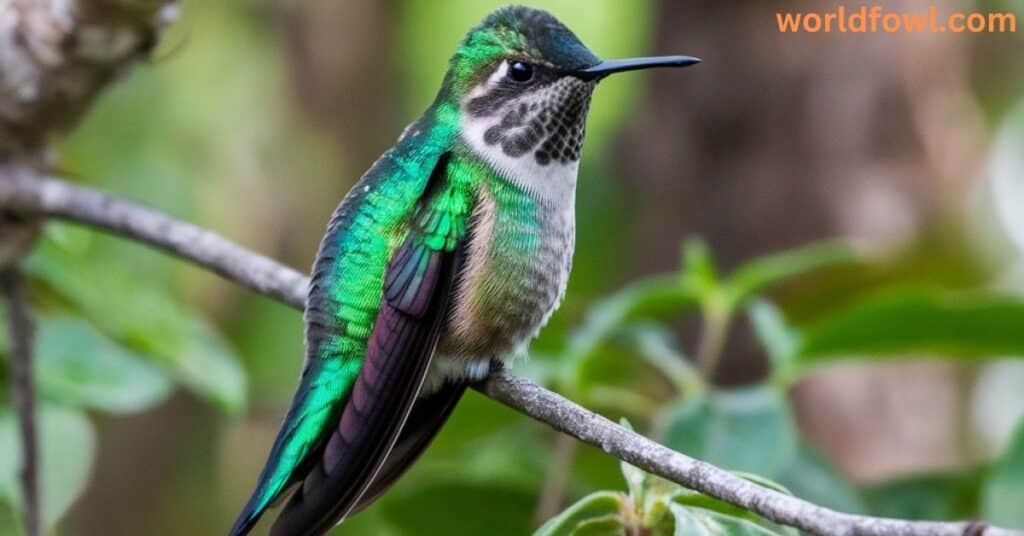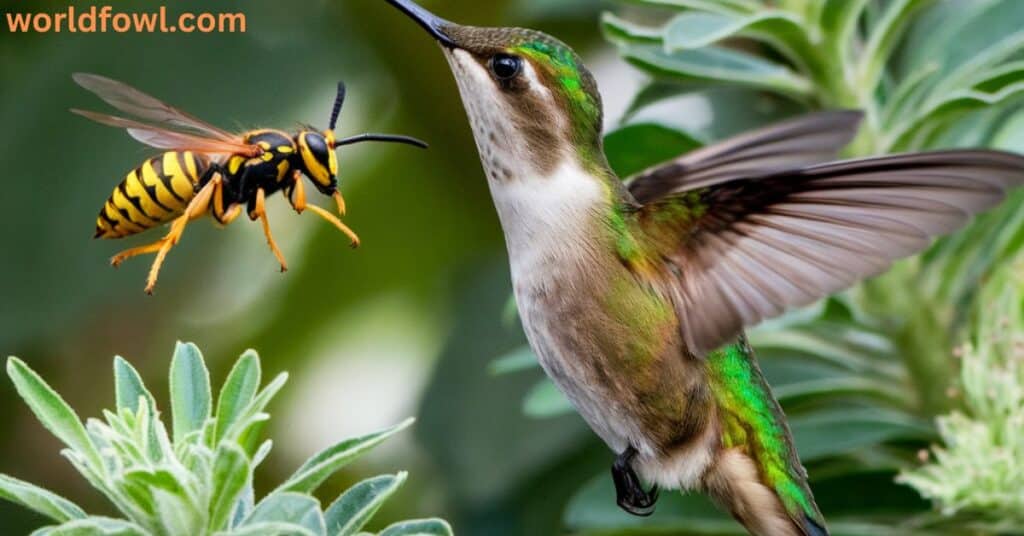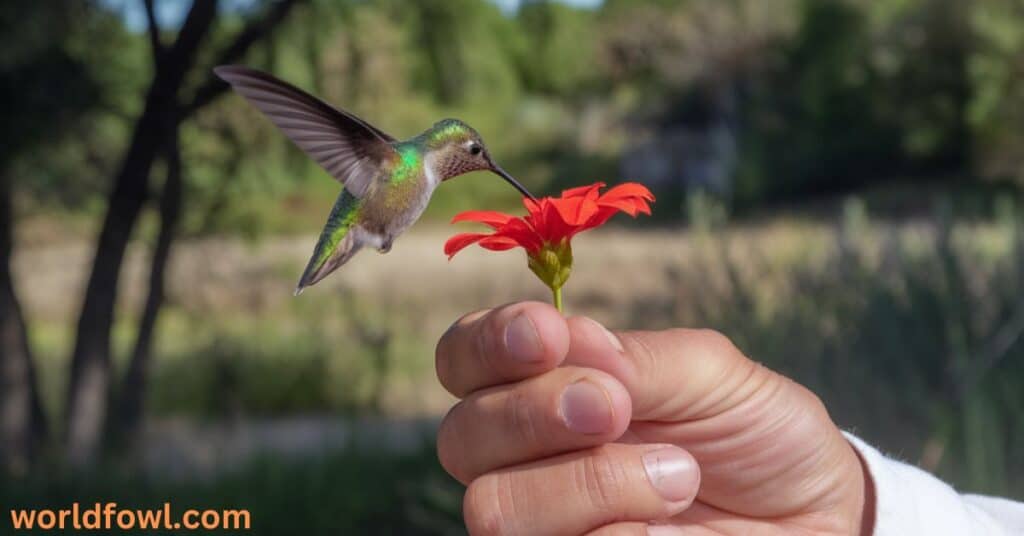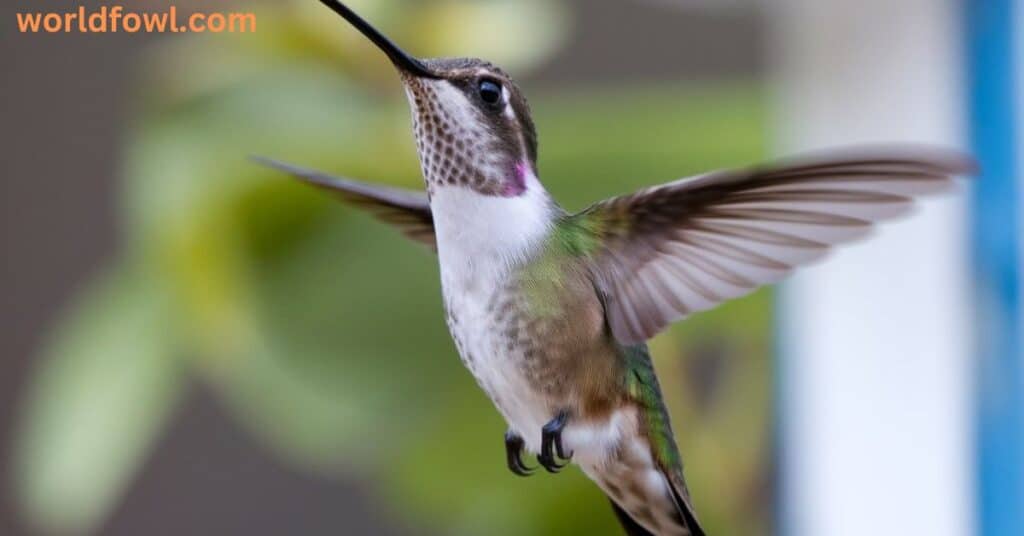Hummingbirds are some of the most extraordinary creatures in the bird world. Their iridescent feathers, tiny size, and unmatched ability to hover have made them a favorite among birdwatchers and nature lovers. With their unique hovering ability and rapid wing beats, hummingbirds seem almost magical as they dart from flower to flower, feeding on nectar and insects. However, despite their small size and delicate appearance, a common question arises: Do Hummingbirds Attack Humans?
This question might seem out of place given the general perception of hummingbirds as fragile, delicate creatures. But understanding their territorial behavior, feeding habits, and defensive behavior will give you insight into whether these tiny birds pose any threat to humans. This blog post will take a deep dive into the behavior of hummingbirds, exploring their interactions with humans, how they behave in various situations, and how to safely observe them without provoking any aggression.
Who Are Hummingbirds?

To understand whether hummingbirds attack humans, we must first get to know these birds better. Hummingbirds belong to the family Trochilidae, and there are more than 300 species of hummingbirds across the Americas, from Alaska to Tierra del Fuego.
Physical Characteristics of Hummingbirds
Hummingbirds are famous for their dazzling iridescent feathers that shimmer in shades of green, red, blue, and purple, making them one of the most colorful birds in the world. The males are particularly showy with vibrant colors to attract mates, while the females tend to be more muted. Despite their dazzling beauty, hummingbirds are tiny creatures, typically weighing only 2 to 4 grams and measuring about 3 to 5 inches in length. Their small size makes them one of the tiniest birds on Earth, but it also contributes to their incredible agility.
The most remarkable physical trait of a hummingbird is its ability to hover. Hummingbirds can beat their wings in a figure-eight motion, allowing them to hover in place while feeding from nectar-rich plants. This ability requires an immense amount of energy, and hummingbirds have adapted to this high-energy lifestyle with a specialized metabolism that allows them to consume more than their body weight in food each day.
Habitats and Distribution of Hummingbirds
Hummingbirds are primarily found in the Americas, with the highest diversity found in tropical regions like Central and South America. While they are present across the continent, they are most common in habitats that offer abundant food sources, such as flowering plants, nectar sources, and breeding grounds.
Though they are often associated with tropical forests, some species also inhabit deserts, mountainous areas, and suburban gardens. In the United States, the ruby-throated hummingbird is the most common species, especially in the eastern part of the country. During migration, some species travel as far as Canada, only to return south when the colder months arrive. Understanding their wide distribution and varying habitats can help us better understand their behavior and potential interactions with humans.
Feeding Habits of Hummingbirds
Hummingbirds primarily feed on nectar from flowers, but they also consume small insects and spiders for protein. The nectar provides them with the necessary sugars for energy, while the insects offer essential nutrients like amino acids and fats. The birds use their long, specialized beaks to sip nectar, and their forked tongues can extend deep into flowers to reach nectar that other birds can’t access.
In addition to flowers, hummingbird feeders are a common attraction for these birds in areas where natural nectar sources are limited, especially during migration. These feeders are typically filled with sugar water, mimicking the nectar of flowers. This setup often brings hummingbirds into close contact with humans, sparking questions about whether these birds are aggressive toward people.
See Also : Do Pelicans Attack Humans? Pelicans Up Close
Understanding Hummingbird Behavior

While hummingbirds are often perceived as harmless, their behavior can sometimes misunderstood, especially when it comes to their interactions with humans. The key to understanding hummingbird behavior is recognizing the territorial instincts and defensive behavior that drive many of their actions.
Curiosity vs. Aggression
One of the primary reasons hummingbirds come into close contact with humans is curiosity. These birds are naturally inquisitive creatures, and they often approach unfamiliar objects or movements. If you’re standing near a hummingbird feeder or a patch of flowers, they might fly close to you, especially if you’re moving or making any noise. However, this is usually a sign of curiosity rather than aggression.
It’s important to note that hummingbirds are not inherently aggressive toward humans. While they may seem bold or persistent when they fly near you, they are typically investigating you, not attacking. Their close encounters with humans are usually due to their curious nature, and their behavior is more about exploration than aggression.
Territorial Behavior
Despite their small size, hummingbirds are highly territorial when it comes to their food and breeding grounds. Males are particularly protective of their feeding areas and will often chase off other birds or any perceived threat. If another male tries to approach a preferred feeding spot, the defending male may fly at him aggressively, making sharp, direct flights that can seem like an attack.
These territorial displays, while seemingly aggressive, are actually an essential part of a hummingbird’s survival. By defending the area around their food sources, males ensure they have enough to eat and can attract a mate. These behaviors may sometimes extend to humans, especially if a person is too close to the feeder or a territory the hummingbird is protecting.
Defensive Behavior
Another reason why hummingbirds might fly close to humans or show seemingly aggressive behavior is to defend their nests or their food sources. Defensive behavior is common among hummingbirds when they feel their space is being invaded. If you’re near a hummingbird feeder or in a territory that a male has claimed, he might approach you aggressively in an attempt to protect what he perceives as his resources.
Defensive behavior can also involve defensive swooping, where a hummingbird will make fast, rapid movements in the air to intimidate or chase off intruders. These displays of aggression generally not meant to cause harm but are simply a part of their instinct to protect their territory.
Signs of Aggression
Though hummingbirds don’t typically attack humans, they can display signs of aggression, especially when they feel threatened or when another bird is invading their territory. Some signs of aggression include:
- Rapid wing beats: A hummingbird might hover in front of you, beating its wings rapidly in an effort to assert dominance or scare you off.
- Chasing: If you’re too close to a feeding spot or near a nest, the hummingbird may chase you or other birds away.
- Sharp calls: Some species of hummingbirds make loud, sharp vocalizations when they feel threatened.
- Defensive swooping: A hummingbird might dart in front of a potential intruder, swooping down to assert its dominance or to protect its space.
See Also : Will Crows Attack Humans? The Hidden Dangers!
Rare Instances of Aggression: When Hummingbirds Defend Themselves

While the majority of hummingbirds are not aggressive toward humans, there are rare instances when they may display more overtly aggressive behavior. These cases typically occur when the bird feels its territory or nesting grounds are in danger.
Defending Nests and Breeding Grounds
Female hummingbirds, like many other birds, will become highly protective of their nests during the breeding season. If a human or animal comes too close to the nest, the female will aggressively chase them away. This is not an attack per se but a protective instinct to keep the nest safe from potential threats. A female hummingbird might fly at a person or animal with great speed, but it’s more of a warning than an actual attack.
Aggression Over Food Sources
Male hummingbirds are notorious for defending their feeding grounds. If there is a hummingbird feeder or a patch of nectar-rich plants, they will often chase away other males or even other species that venture too close. This behavior can sometimes misinterpreted as aggression, but it’s simply a territorial dispute. The hummingbird will hover aggressively in front of the intruder, using rapid wing beats and quick flight movements to assert dominance.
See Also : Do Jack Rabbits Attack Humans?
Safe and Enjoyable Human-Hummingbird Interactions

Even though hummingbirds may exhibit aggressive behaviors in rare instances, it is still entirely possible to have peaceful and safe interactions with them. By respecting their space and understanding their behavior, you can create an environment where both you and the birds can coexist harmoniously.
Reacting to Hummingbird Approaches
If a hummingbird flies close to you, the best thing to do is to remain calm. Avoid sudden movements, as this might startle the bird. Instead, stay still and allow the hummingbird to explore its environment. If you’re standing near a hummingbird feeder, the bird might fly close to check you out, but this is typically not a sign of aggression. Hummingbirds are simply trying to assess their surroundings.
Safe Observation
When observing hummingbirds, it’s best to maintain a respectful distance. Using binoculars or a camera with a zoom lens can help you observe the birds without getting too close. This ensures that you don’t disrupt their natural behaviors or make them feel threatened. It also helps keep the interaction enjoyable for both you and the bird.
Avoiding Provoking Aggression
To avoid provoking any aggressive behavior, it’s essential to respect the hummingbird’s space, especially near feeding stations and nesting sites. If you’re standing near a hummingbird feeder, try not to crowd the area or block the bird’s access to food. This reduces the likelihood of a territorial dispute.
See Also : Can Geese Attack Humans? Geese Gone Wild
Attracting Hummingbirds to Your Yard

If you’re interested in attracting hummingbirds to your yard, it’s important to create an environment that suits their needs. By offering food, shelter, and a safe space, you can encourage hummingbirds to visit and thrive.
Setting Up Hummingbird Feeders
To attract hummingbirds to your garden, start by setting up a hummingbird feeder. Choose feeders that are easy to clean and that use a nectar solution (four parts water to one part sugar). Hummingbirds are naturally drawn to the color red, so opt for a red-colored feeder. Place the feeder in a quiet spot away from heavy foot traffic to reduce the chances of disturbing the birds.
Planting Nectar-Rich Plants
Another way to attract hummingbirds is by planting nectar-rich plants in your garden. Flowers like trumpet vines, bee balm, and columbine are particularly appealing to hummingbirds. These plants provide a natural food source for the birds and create a vibrant, colorful environment in your garden.
Creating a Hummingbird Garden
Designing a hummingbird garden can further enhance your chances of attracting these beautiful creatures. A hummingbird garden should include a variety of plants that provide nectar, as well as perching spots like trees or shrubs. It’s also essential to create a space that provides shelter from predators and strong winds.
FAQs
Do hummingbirds attack humans?
No, hummingbirds do not typically attack humans. While they may display aggressive or defensive behavior if they feel their territory, feeding grounds, or nests are threatened, these actions are not directed at humans in an attempt to harm them. Instead, the hummingbirds are simply protecting their space, especially when guarding nectar sources like hummingbird feeders or nectar-rich plants. Most of the time, they are more curious about humans than aggressive.
Why do hummingbirds fly close to people?
Hummingbirds are naturally curious creatures and may fly close to humans for several reasons. One common reason is that they are investigating their surroundings or checking out a hummingbird feeder or other nectar sources. If you’re standing near a hummingbird feeder, they might fly up to you to see what you’re doing. This behavior is usually a sign of curiosity rather than aggression. Hummingbirds are also attracted to movement, so if you’re moving or standing still near a food source, they may come closer to investigate.
How can I safely observe hummingbirds?
To safely observe hummingbirds, maintain a respectful distance. Avoid making sudden movements or startling the bird, as this may make it feel threatened. Using binoculars or a zoom lens camera will allow you to enjoy close-up views without disturbing the birds. Also, set up a hummingbird feeder or plant nectar-rich plants like trumpet vines to attract hummingbirds to your yard. Ensure the area is quiet and not too crowded to avoid scaring the birds away.
Are certain hummingbird species more aggressive?
Yes, some species of hummingbirds are known to exhibit more territorial behavior than others. For example, males of species like the rufous hummingbird are particularly aggressive in defending their feeding areas and will chase away other males or even other birds. This behavior is more prominent during the breeding season, when males are trying to protect their territory. While this aggression may seem harsh, it is an essential part of their reproductive strategy to secure a food source and attract mates. However, this territorial behavior is not usually directed at humans unless they are too close to a hummingbird feeder or nesting site.
Conclusion: Do Hummingbirds Attack Humans?
So, do hummingbirds attack humans? The answer is no, hummingbirds do not attack humans in the traditional sense. While they may display defensive behavior and territorial aggression, their behavior is typically not meant to harm people. Rather, hummingbirds are protecting their food sources or nesting areas. They may chase away other birds, or show defensive displays, but these actions are rooted in instinct, not a desire to harm humans.
By understanding their natural behavior, respecting their territorial instincts, and providing a hummingbird garden or hummingbird feeder, you can enjoy these incredible birds without fear of aggression. With the right knowledge and respect for their needs, you can create a harmonious space where both you and the hummingbirds can coexist peacefully.
So, next time you spot a hummingbird fluttering nearby, remember that they’re just curious creatures looking to explore their environment—nothing to fear!

Henry James is a seasoned blogger and a passionate storyteller on “World Fowl.” With years of experience crafting engaging content, he brings a unique blend of expertise and creativity to his writing. Henry specializes in exploring diverse topics with depth and clarity, captivating readers worldwide.







